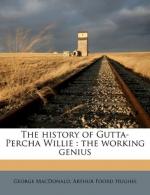|
This section contains 225 words (approx. 1 page at 300 words per page) |
Natural rubber, which is essentially cis-1,4-polyisoprene, exhibits elastic properties; its trans isomer on the other hand exhibits plastic properties. Like rubber, gutta percha is an extract from tropical trees, but unlike rubber it is hard and flexible at most ambient temperatures, softening at approximately 100°C.
Gutta-percha is derived from the trunk and leaves of the Malayan gutta tree (Palaquium gutta), which is grown on plantations. Trees are tapped or leaves are gathered, chopped, and soaked in boiling water. The gum is then recovered and packaged. Similar to gutta-percha is balata, the inferior quality latex of the South American bully tree (Mimusops balata). Both gutta-percha and balata are noted for their resistance to impact and embrittlement.
Gutta-percha was first exported from the Far East in 1838. English physicist and chemist Michael Faraday (1791-1867) soon noted that it was an electric insulator. This property, along with its ability to resist disintegration in salt-water, made it ideal for use as insulation for underwater telegraph cables, the first one being placed between England and France in 1850. A screw extruder was developed to coat the copper conductor, thus laying the foundations for today's plastics extrusion industry. Gutta percha also found early use as a molding material. It continues to be a component in some special adhesives, and both balata and gutta-percha are used in golf ball covers.
|
This section contains 225 words (approx. 1 page at 300 words per page) |


